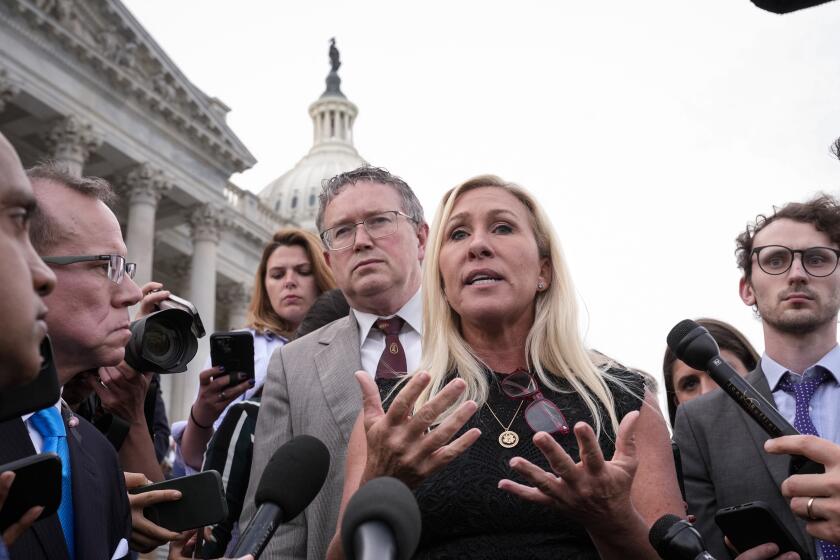Project Is Tracking Kin of Lewis & Clark Group
Two centuries after the Lewis and Clark expedition trekked through the unexplored West to Oregon, a group is looking for the descendants they left behind.
They could number in the thousands today, but the Lewis & Clark Corps of Discovery Descendant Project wants to publish a genealogical catalog of every descendant of the 34 members of the famed expedition, including descendants of brothers, sisters and even cousins of expedition members.
The deadline: Dec. 31, 2003, in time for a family reunion at Fort Clatsop on the Oregon coast.
Many of the men from the expedition scattered when it ended, leaving little trace. Others died before marrying, said Gary Moulton, editor of the latest edition of the Lewis and Clark journals.
“These were just hired hands,” Moulton said. “They did their jobs, and then they were finished.”
Nobody is sure how many are out there. Many of the men died childless after the expedition, or at least without getting married. That is the main reason the “collateral descendants” of the explorers, rather than just direct descendants, are being sought.
Only 50 direct descendants and 18 collateral descendants have been documented so far. But the project is getting increased attention, including a potential publishing deal with the Oregon Historical Society.
The bicentennial of the Lewis and Clark Expedition will be celebrated nationally from 2003 to 2006. Sandra Hargrove of Long Beach, Wash., who conceived the project, hopes to publish the first edition of the lineage book by 2004.
To be recognized, a candidate must prove his or her lineage and pay a $3 fee.
Included is a ticket to the Lewis and Clark family reunion at Fort Clatsop in 2004. No plans are in the works for a society with annual dues or any further obligations.
Hargrove said they are limiting inclusion to members of the expedition that traveled from present-day North Dakota to Oregon and back, as well as one man who died early in the trek. That number included an Indian woman, Sacagawea, and York, a slave.
That complicates things because records for slaves, as well as Indians, were largely passed down orally.
Historians rely on documents, creating a cultural bias against Indians, as well as any children who may have been born out of wedlock. The men of the Lewis and Clark Expedition were known to have had sexual relations with many Indian women.
But almost no proof of any children among the tribes is known to exist.
“The lineage of horses are easier to check than those of slaves,” said Ron Craig, a Lake Oswego film producer who is working on a documentary of York. “Records, such as they were, have been lost.”
Hargrove started the research two years ago with her friend Louise Lewis Rennacker, a collateral descendant of Meriwether Lewis. The idea was to raise money for local genealogy societies in Clatsop County and Pacific County, Wash.
An applicant must furnish proof of all names, dates and places that clearly tie each generation to the preceding one. The proof can consist of documents, from birth, death and marriage certificates to census records.
More to Read
Start your day right
Sign up for Essential California for news, features and recommendations from the L.A. Times and beyond in your inbox six days a week.
You may occasionally receive promotional content from the Los Angeles Times.






